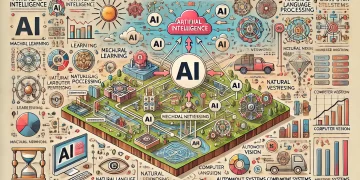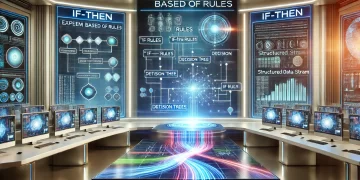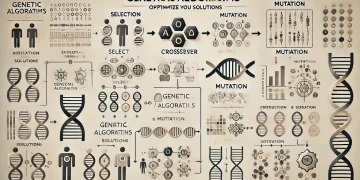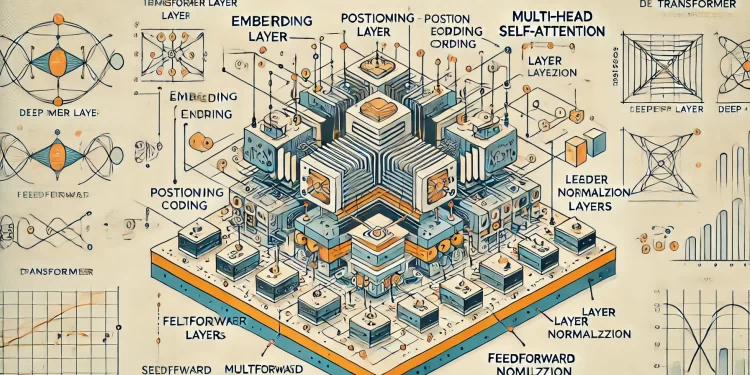Imagine you’re using your phone’s Face ID to unlock it. You just glance at the screen, and it recognizes you instantly, whether you’re in bright sunlight, wearing glasses, or even after a new haircut.
Now, think about self-driving cars. They don’t just follow painted lane markings; they recognize pedestrians, traffic lights, and even cyclists weaving through traffic.
How do these systems work so well? The answer is deep learning, one of the most powerful AI technologies ever developed.
But what makes deep learning so much better than older AI? Let’s break it down.
What is Deep Learning?
What makes deep learning unique is that it uses many layers of artificial neurons to analyze data at different levels. Each layer breaks down complex information into simpler patterns, allowing the AI to make more accurate and flexible decisions.
Think of it like a high-tech assembly line:
- First Layers: Detect basic patterns (e.g., edges, curves, or simple colors).
- Middle Layers: Recognize more detailed features (e.g., a nose in a face, a wheel in a car).
- Deepest Layers: Combine everything to understand complex objects (e.g., recognizing an entire face or distinguishing between a pedestrian and a stop sign).
This step-by-step layered approach is why deep learning can handle messy handwriting, blurry images, and unpredictable situations better than older AI methods.
Why Deep Learning is Better Than Old AI
The Early Days of AI: Fixed Rules
Before deep learning, AI worked more like a rigid checklist. If you wanted a computer to recognize a cat, you had to manually tell it what to look for:
- “A cat has pointy ears.”
- “A cat has whiskers.”
- “A cat has fur.”
Problem? If the cat was lying down, facing sideways, or had an unusual fur pattern, the AI would fail.
Classical Neural Network (Backpropagation): Learning But Limited
AI improved when it learned how to adjust itself based on feedback. This is called backpropagation, a way for AI to correct mistakes and improve over time.
Example: Early AI for Self-Driving Cars
- A simple AI might recognize a stop sign by looking for a red octagon.
- Problem? If a stop sign had graffiti on it or was slightly bent, the AI could fail to recognize it.
Deep Learning: Learning Step by Step
Deep learning doesn’t just memorize patterns, it learns from massive amounts of data, layer by layer.
Example: Self-Driving
- Instead of just recognizing lane markings, a deep learning model studies millions of hours of driving data.
- It doesn’t just “see” road signs, it understands how traffic flows, how pedestrians move, and how other cars behave.
- If a bicycle suddenly swerves onto the road, a deep learning system is far more likely to react correctly.
This ability to learn from experience is why deep learning is used in facial recognition, medical diagnosis, language translation, and even generating realistic images.
Examples:
Face ID and Facial Recognition
- Old AI: Measured distances between eyes and nose, failed if you wore glasses.
- Deep Learning: Learns from millions of faces, recognizes you even if you change your hairstyle or grow a beard.
Self-Driving Cars (Tesla’s Autopilot)
- Old AI: Looked at lane markings, failed in poor weather.
- Deep Learning: Learns from real-world driving, recognizes roads even if lane markings are faded.
The Challenges of Deep Learning
Even though deep learning is incredibly powerful, it’s not perfect. Some major challenges include:
Requires Massive Computing Power
- Deep learning models need powerful computers to process huge amounts of data.
Difficult to Understand (“Black Box” Problem)
Deep learning models are called “black boxes” because they are hard to interpret. We don’t know why they make certain decisions. This lack of transparency is a major issue, especially in critical fields like healthcare, finance, and law enforcement.
Can Be Tricked
- A small, carefully crafted change to an image can fool AI models, a cat might be misclassified as a dog with just a few pixel alterations.
What’s Next for Deep Learning?
Despite Deep Learning’s success, today’s AI still struggles with basic reasoning and common sense, things humans take for granted. While AI can recognize patterns in massive datasets, it does not understand concepts the way people do.
Ask a deep learning model: “If I put ice cream in the oven, what will happen?”
A child can immediately tell you, “It will melt!” because they understand basic physics and real-world cause-and-effects. But a deep learning model trained on millions of images might not grasp this unless it has specifically seen examples of melting ice cream labeled as such.
Another Example: Self-Driving Cars and Common Sense
A self-driving car trained on millions of traffic scenarios might still struggle with an unusual situation, like navigating a road flooded with water. A human driver, even without previous experience, can reason that deep water could damage the car or be unsafe. AI, however, might not generalize this knowledge without explicit training.
What’s Next for AI?
While deep learning has transformed AI, the next breakthrough lies in creating systems that do more than just recognize patterns. Future AI must integrate common sense, reason logically, think critically, explain its decisions, and develop a deeper understanding of the world. The goal isn’t just bigger models or more data, it’s building AI that truly understands, adapts, and reasons like an intelligent entity.



































